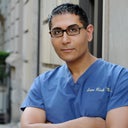The vast majority of rhinoplasty surgeries are successful when performed by an experienced rhinoplasty surgeon, and there are little if any post-operative problems. It is important to differentiate rhinoplasty complications from side effects.









